The Creatives Project doesn't let tragedy stand in the way of its creative process for long. It struck not long after TCP announced its 2012-14 residency recipients when the Captiol View house that was to serve as an expansion of the residencey was lost in a fire. While all of TCP's residents were affected by this loss, they all prospered through this adversity. Andre Keichian was provided with a subsidized apartment thanks to TCP patrons Edward and Liv Nyankori who came to the rescue, Masud Olufani optimized space at the Elbert House provided by Pohl Real Estate after Gyun Hur was offered an amazing professional opportunity in Hong Kong, and Charlie Watts elected to receive free TCP studio space at the Goat Farm Arts Center.
As Keichian and Olufani complete their residencies, TCP will select two new local artists to receive subsidized housing beginning this fall. Keichian and Olufani will host an open house and Q&A with application finalists in late July (stay tuned) and will be exhibiting works they created during their time nesting with TCP at CONTINUUM, TCP's Annual Exhibition and Fundraiser on Oct 10th. But before they move on to other creative processes, these two artists answer a few questions posed by The Creative Process.
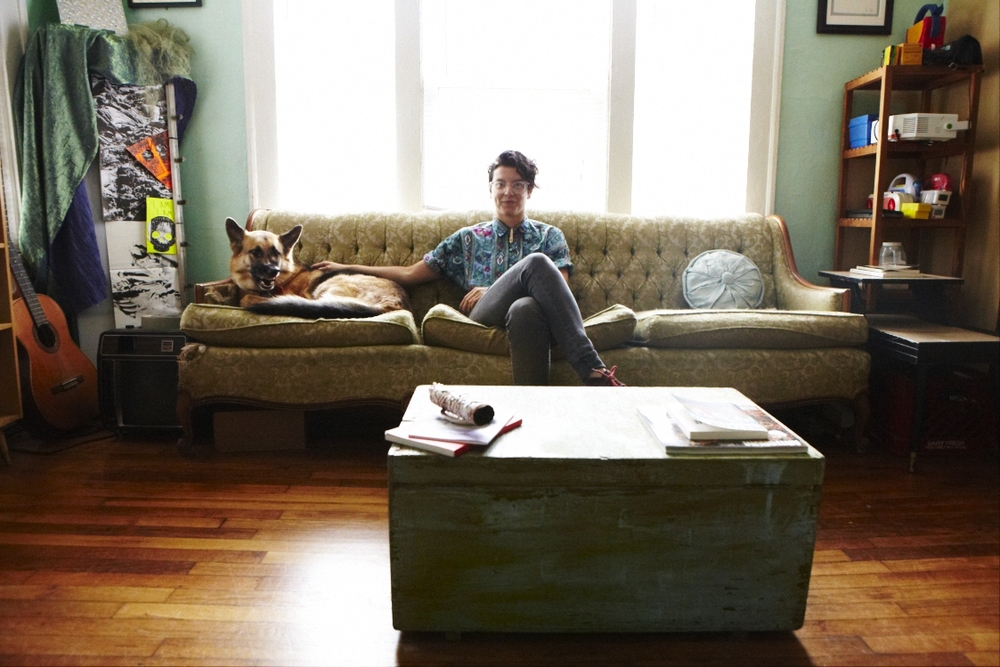 Andre Keichain's living room in the Metropolitan Apartment.
Andre Keichain's living room in the Metropolitan Apartment.
In what ways has this residency helped to strengthen your career as an artist?
Andre: My TCP residency has offered me several different branches of development. One is through the experience of teaching and working with fellow artists, which expanded my artist community and helped developed an already existing interest in early childhood art education. The second is through the subsidized rent, which alleviated some daily economic pressures and allowed for more time to focus and invest in my practice. Thirdly, I now have a better insight on how to potentially develop arts advocacy programming, and I’m excited to see how this may influence my future endeavors.
Masud: The TCP residency has provided me with a safe stable environment in which to explore my ideas. It has also served as a community of support comprised of arts professionals who have served as touchstones of inspiration. The residency also facilitated opportunities for me to exhibit my work in the Atlanta community which in turn increased my visibility as a working artist.
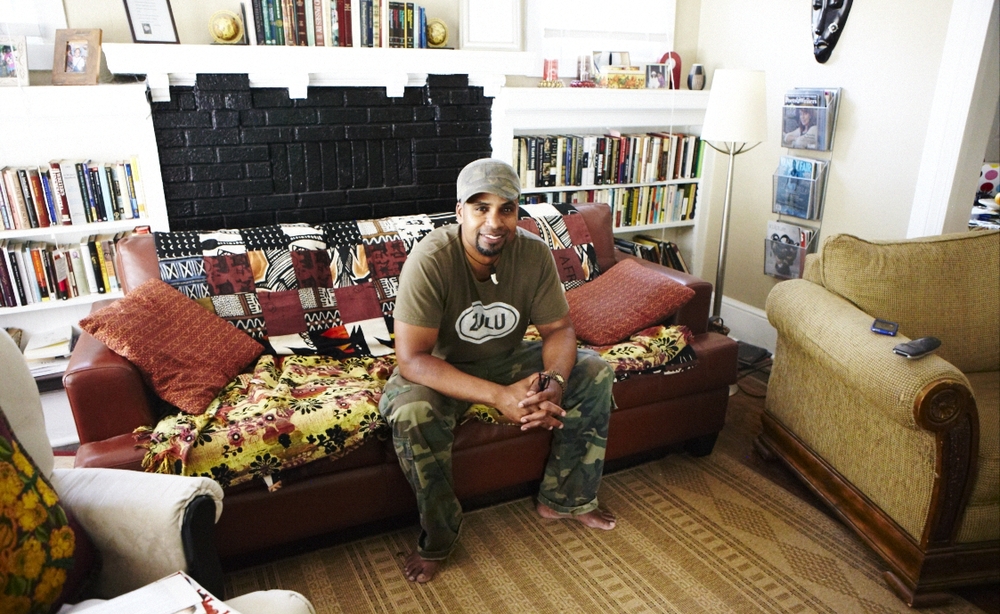 Masud Olufani in his living room at the Elbert House.What is your apartment/house like and have you enjoyed it?
Masud Olufani in his living room at the Elbert House.What is your apartment/house like and have you enjoyed it?
Andre: I really love the space I have been living in. It’s a one-bedroom apartment that is part of a quadraplex, surrounded by good neighbors. Some I have a closer relationship to than others, but they have always made me feel safe.
I have painted the walls of my apartment the colors of a desert sunset and the backyard is a magical green space. In the spring and summer, you will see bunnies! Baby bunnies, grown bunnies, really cute creatures that have learned not to scamper when I pull in with my car. And during summer, fireflies flicker as high as the tallest trees. These are a couple of my favorite things-- that there exists a quiet space in contrast to the craziness that exists from living off of a major intersection.
My relationship to my landlords has always been great. Honestly, this is the best landlord situation I’ve ever had. The Nyankori’s are laidback, dependable, and awesome. They are really supportive to the artistic development of this neighborhood, where they also reside.

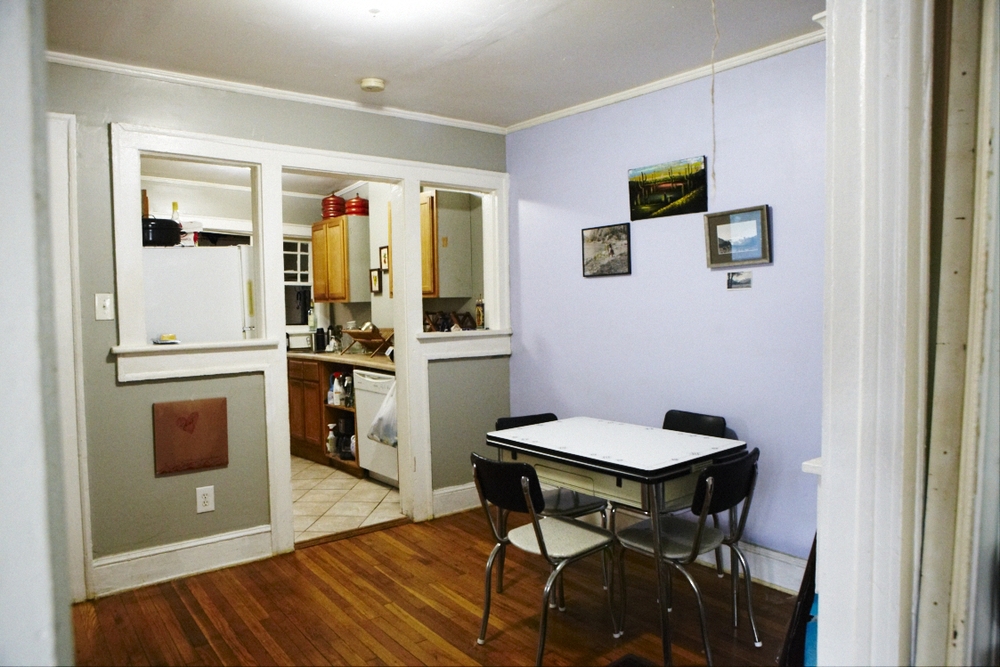 Andre's Metropolitan Apartment bedroom & dining room.Masud: I have really enjoyed living in the Adair Park community. The neighborhood is quiet and family focused. I love being able to wake in the morning and jump right into my studio practice without having to travel outside of my home.
Andre's Metropolitan Apartment bedroom & dining room.Masud: I have really enjoyed living in the Adair Park community. The neighborhood is quiet and family focused. I love being able to wake in the morning and jump right into my studio practice without having to travel outside of my home.
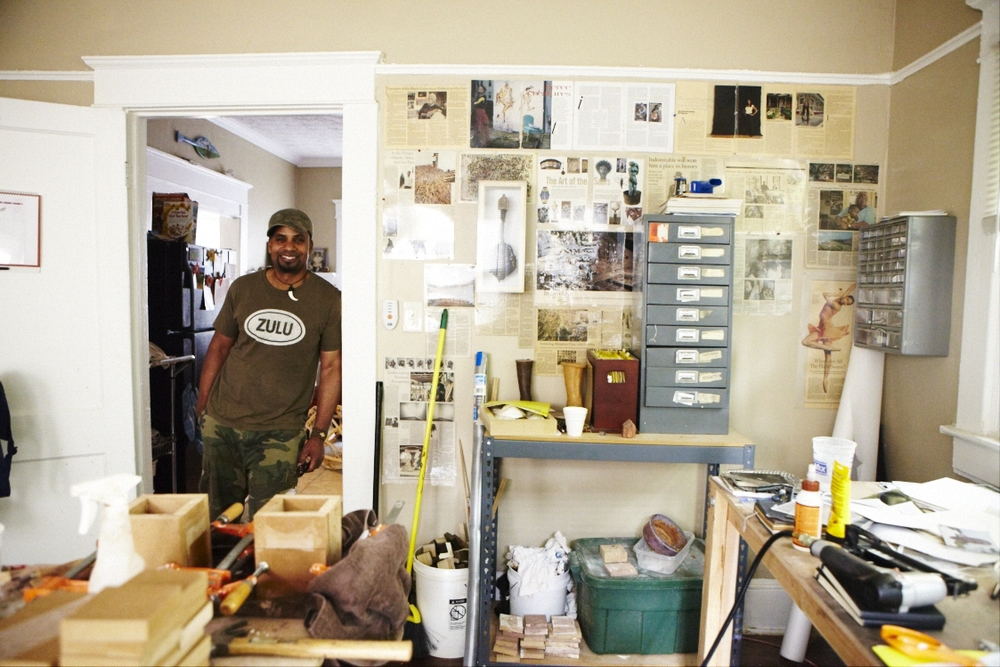
 Masud's Elbert House home studio.
Masud's Elbert House home studio.
How & why do you believe the community outreach portion of the program is important to you as an artist and to the community at large.
Andre: With regards to the residency-housing program, I think the outreach component helps maintain an aspect of accountability to the artist’s experience and to the program at large. By living in the same neighborhood where I taught, it helped establish more of a direct relationship between my students and myself and to the social themes we tried to document and discuss within the classroom. The reality is, gentrification is too large of a pattern to overcome, but I do think that by working within communities is a great way to help lessen its burden. There is so much about this neighborhood that I have grown to love through living here, that I feel committed to its overall well-being and preservation.
Masud: One of the most important aspects of the residency has been the community service component which pairs the artists with children from the surrounding community in arts centered programming. This process engages the residency participants in community development through investment in human potential. Art as a mechanism for social change is made visible.
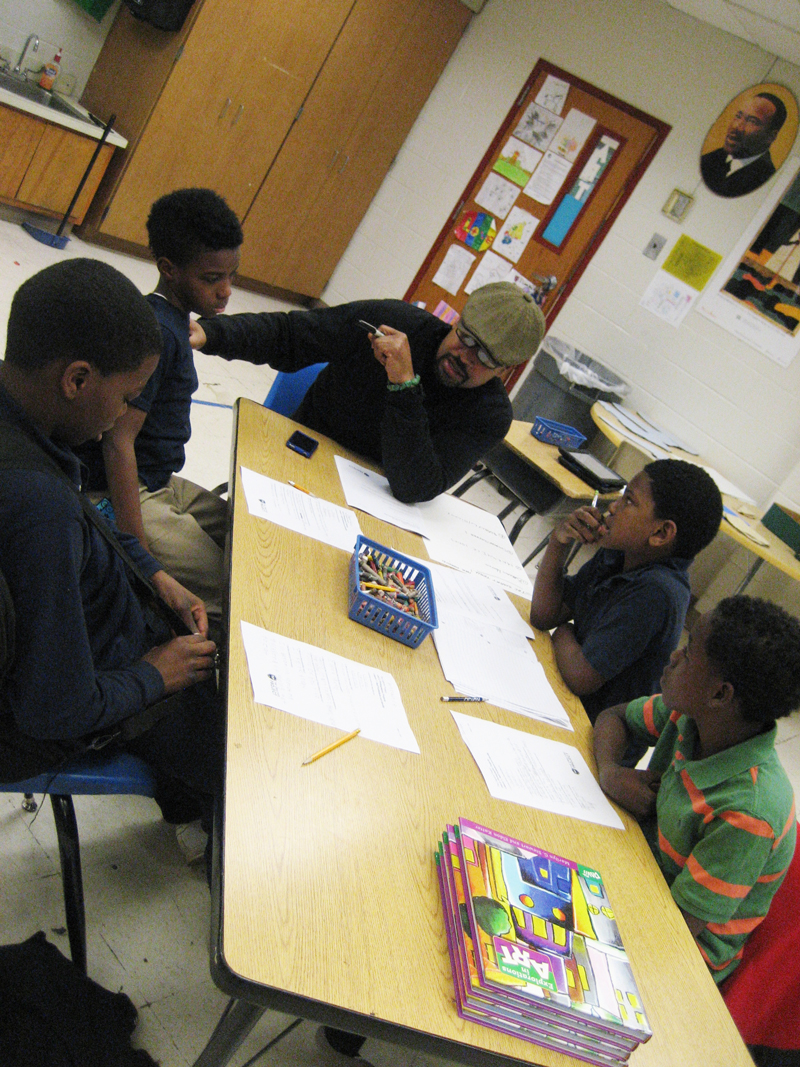 Masud teaching the students of Perkerson Elementary.
Masud teaching the students of Perkerson Elementary.
What group of students did you complete your outreach hours with? How do you think you made an impact? What did you learn from working with these children?
Andre:
I was a part of the inauguration of the Capture Project. It’s a photo and video-based program, aimed to develop community and documentary practices amongst students. I was one of five artists teaching children at Perkerson Elementary, situated in the community where all residency artists reside. This summer we launched the program in the Old Fourth Ward in partnership with the Year of Boulevard.
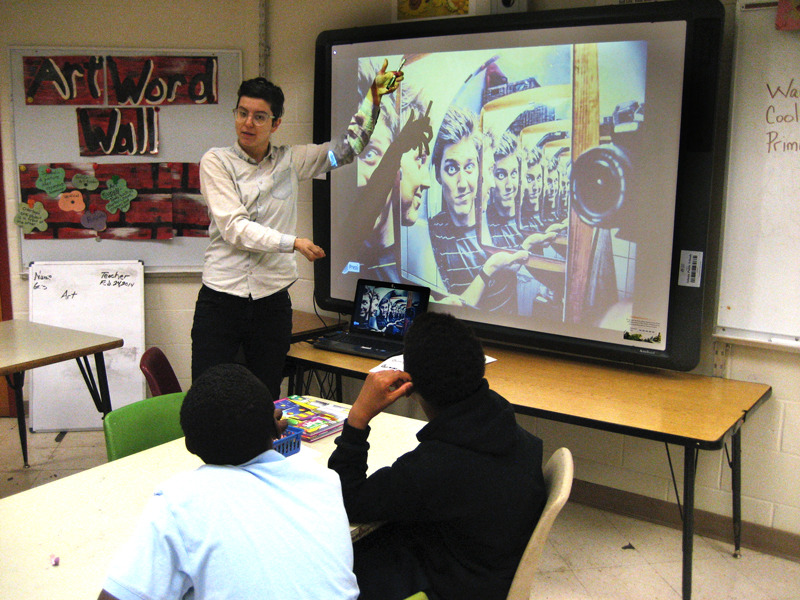 Andre teaching the students of Perkerson Elementary.
Andre teaching the students of Perkerson Elementary.
In all honesty, it’s sometimes difficult to have a clear understanding of the impact we provided, but I did see our group of students grow in their enthusiasm for taking photos, I saw behavior improve, and witnessed an increase in the accountability of our student towards their actions. We focused on educational strategies that would help to minimize behavioral distractions as we provided them with a structured creative outlet and I could see how important our sessions became to them. That alone made them all the more important to me.
The instructors, both individually and collectively, were constantly evaluating and changing our approach to teaching based on our students’ needs. And through that, I better learned the importance flexibility and commitment that is dutifully needed within the educational system especially in Title One schools. Knowing that our students have brilliant minds wasn’t enough; it was trying to figure out ways to keep them individually engaged so they can complete their respective projects.
 Andre (center) with TCP residents and #CaptureO4W youth photographers
Andre (center) with TCP residents and #CaptureO4W youth photographers
Wanna join the TCP family???
SUBMIT YOU APPLICATIONS BEFORE JULY 12th!
interview by Jonathan Williams / WrestlingWithPopCulture
photography by: Neda Abghari
